Study the diagram given below and answer the questions that follow :
How is this structure well adapted for absorption of digested food ?
To answer the question about how the structure of the small intestine is well adapted for the absorption of digested food, we can break it down into several key points:
1. Structure of the Small Intestine: The small intestine is a long, coiled tube that is divided into three parts: the duodenum, jejunum, and ileum. Its length (about 6 meters) provides a large surface area for absorption.
Hint: Consider the length and coiling of the small intestine and how it contributes to absorption.
2. Villi and Microvilli: The inner surface of the small intestine is lined with tiny finger-like projections called villi. Each villus is covered with even smaller hair-like structures called microvilli. This increases the surface area significantly, allowing for more efficient absorption of nutrients.
Hint: Think about how increasing the surface area can enhance the absorption process.
3. Rich Blood Supply: The villi contain a network of capillaries that transport absorbed nutrients into the bloodstream. This proximity to blood vessels allows for quick and efficient transfer of nutrients to the body.
Hint: Reflect on the importance of blood vessels in transporting nutrients after absorption.
4. Selective Absorption: The small intestine has specialized cells that facilitate the selective absorption of different nutrients, such as carbohydrates, proteins, fats, vitamins, and minerals. This ensures that the body gets the necessary nutrients it needs for various functions.
Hint: Consider how the body prioritizes different nutrients during the absorption process.
5. Digestive Enzymes: The small intestine also secretes digestive enzymes that help break down food into its constituent nutrients, making it easier for absorption.
Hint: Think about the role of enzymes in preparing food for absorption.
6. Peristalsis: The walls of the small intestine are muscular and can contract to move food along. This process, known as peristalsis, helps mix the food with digestive juices and ensures that it comes into contact with the absorptive surfaces.
Hint: Consider how movement within the digestive tract aids in the absorption process.
Summary:
The small intestine is well adapted for the absorption of digested food due to its long length, presence of villi and microvilli that increase surface area, rich blood supply for nutrient transport, selective absorption capabilities, secretion of digestive enzymes, and peristaltic movement that aids in mixing and contact with absorptive surfaces.
The small intestine is well adapted for the absorption of digested food due to its long length, presence of villi and microvilli that increase surface area, rich blood supply for nutrient transport, selective absorption capabilities, secretion of digestive enzymes, and peristaltic movement that aids in mixing and contact with absorptive surfaces.
Topper's Solved these Questions
- BOOK - ICSECHAPTER - DIGESTIVE SYSTEM EXERCISE - REVIEW QUESTIONS (MULTIPLE CHOICE TYPE)4videos
DIGESTIVE SYSTEM
- BOOK - ICSECHAPTER - DIGESTIVE SYSTEM EXERCISE - REVIEW QUESTIONS (VERY SHORT ANSWER TYPE)3videos
DIGESTIVE SYSTEM
- BOOK - ICSECHAPTER - DIGESTIVE SYSTEM EXERCISE - TOPIC 2 (3 Marks Questions )12videos
DIGESTIVE SYSTEM
- BOOK - ICSECHAPTER - CELL:THE UNIT OF LIFE EXERCISE - TOPIC 3(5 Mark Questions )14videos
CELL:THE UNIT OF LIFE
- BOOK - ICSECHAPTER - DISEASES : CAUSE AND CONTROL EXERCISE - Review Questions (D. LONG ANSWER TYPE)5videos
DISEASES : CAUSE AND CONTROL
Similar Questions
Knowledge Check
- Question 1 - Select One
Study the diagram given below and answer the questions that follow:
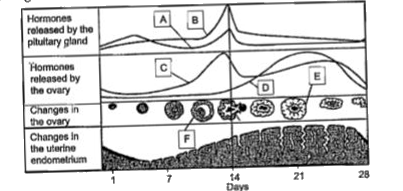
The structure marked 'E' is ______ACorpus luteumBSecondary follicleCGraafian follicleDCorpus albicans
Study the diagram given below and answer the questions that follow :
What is emulsification?View SolutionStudy the diagram given below and then answer the question that follow :
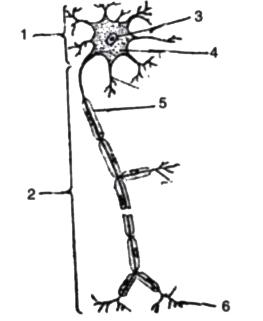
Identify the cell.View SolutionStudy the diagram given below and answer the questions that follow:
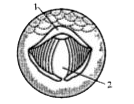
How does this structure behave when you swallow something?View SolutionStudy the diagram given below and answer the questions that follow :

Which tissue is found in this structure?View SolutionStudy the diagram given below and answer the questions that follow :
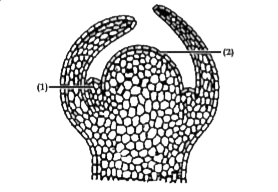
Explain the term .Axillary bud..View SolutionStudy the diagram given below and answer the questions that follow:
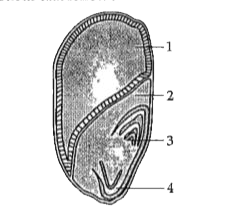
Name the structure shown and label its parts 1 and 2.View SolutionStudy the diagram given below and answer the questions that follow:
Name the structure shown and label its parts 1 and 2.View Solution

